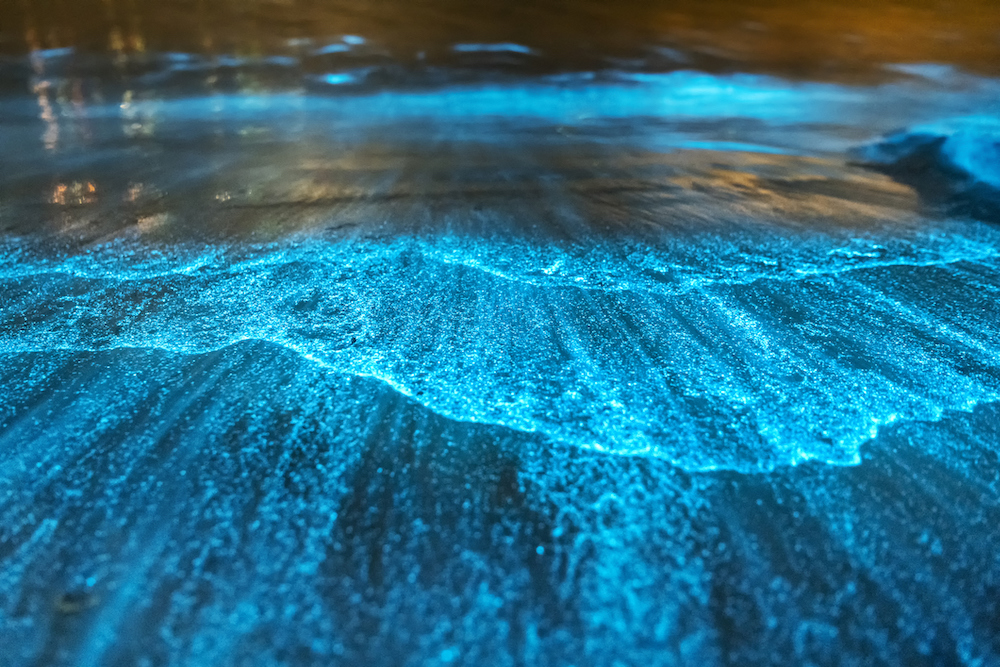Scientists at the University of California, San Diego (UCSD) used hydrogels mixed with dinoflagellates and single-celled microalgae to make mechanoluminescent living composites that are very strong and respond very well to mechanical stress. Living composites with hydrophobic coatings could last five months in harsh conditions while maintaining mechanoluminescence. These mechanosensing composites, which drew inspiration from the bioluminescent waves seen during red tide events at San Diego’s beaches, have a lot of potential for use in biohybrid sensors and robotics.
The research, “Ultrasensitive and robust mechanoluminescent living composites,” was published in Science Advances.
Algae-based mechanosensing composites could be used in biohybrid sensors
Biohybrid techniques have been used by researchers to directly combine living things with man-made materials to make devices that have the functions of the living things. Examples of these devices include mechanically property-tunable composites, biohybrid actuators and robots, and living biochemical sensors.
Even though mechanosensing organisms are common in nature, they are rarely made in the lab because most biohybrid systems have problems like being hard to build and maintain, being unable to survive in harsh environments, and reacting slowly to stimuli.
Chenghai Li, a PhD student in mechanical and aerospace engineering, and his colleagues in the lab of Shengqiang Cai, PhD, professor, mechanical and aerospace engineering at the UCSD Jacobs School of Engineering, made mechanoluminescent living composites that are very sensitive and strong. They did this by embedding dinoflagellates into soft, biocompatible hydrogel matrices. The dinoflagellates kept their natural, almost instantaneous luminescent response to mechanical stress with very high sensitivity (as low as several pascals).
These living composites had hydrophobic coatings that lasted about five months in harsh conditions (like acidic and basic solutions) with little upkeep. Li and colleagues also 3D-printed the living composites into large-scale (~5 cm) mechanoluminescent structures with a high spatial resolution (~0.39 mm). The UCSD researchers further enhanced the mechanical properties of living composites with double-network hydrogels.
Last, they demonstrated the application of soft robotics with a biomimetic swarm of soft actuators that emitted colored light upon magnetic actuation. These living composites that glow when moved not only provide a way to study the bioluminescence of dinoflagellates in large numbers but could also be used in biohybrid sensors and robotics.
Despite the promising results, there are still some limitations that need to be further addressed before practical applications of these mechanoluminescent living composites. Of note, the P. lunula dinoflagellates used in the current study can only be maintained at temperatures between 18° and 27°C but cannot tolerate extreme environmental conditions. Also, the hydrogels that were used in this study break down when they are loaded and unloaded again and again. This causes light emissions to change from cycle to cycle, which is bad for sensing applications.
There are several applications for these living composites. To create biohybrid robots, one application would be to combine a mechanoluminescent living composite with optogenetically modified muscle cells. Materials that glow when moved could also be used in biomedical fields, such as in vivo light sources for precise drug release, photothermal therapy, and photodynamic therapy. These living composites are highly biocompatible and can be made biodegradable, which might be suitable for biomedical applications.


